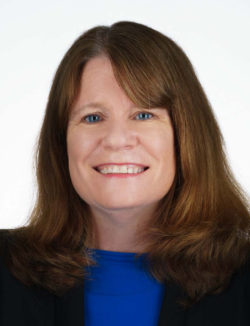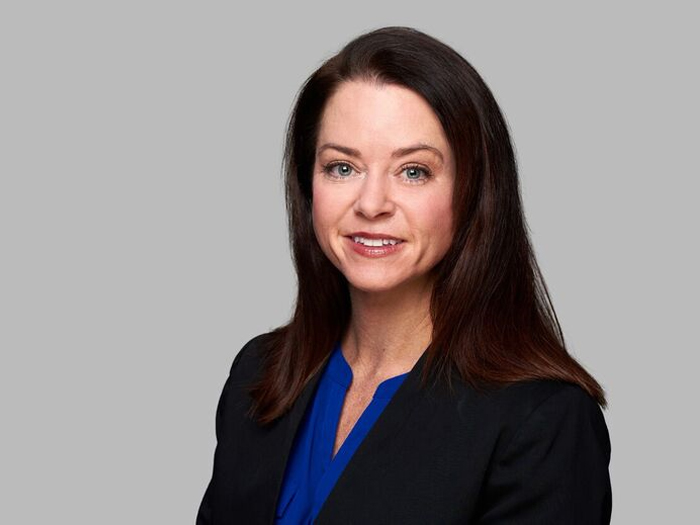Sponsored Content by ProAssurance
How Providers Can Navigate Medical Professional Liability Risks in a Post-Roe World

In the months since the Supreme Court overturned Roe v. Wade with the Dobbs v. Jackson Women’s Health Organization decision, medical providers have felt a wave of uncertainty.
In states that have enacted abortion bans, there is concern that providers may be cautious about engaging in treatments that could be interpreted as abortion over fears of criminal prosecution.
Laws with exceptions for saving the life of the mother don’t always clearly define under what circumstances an abortion would be legally allowed, and there isn’t much precedent for providers since the bans have yet to be tested in the courts.
“Because this post-Dobbs world is really new, there hasn’t been significant legal precedent so far,” said Katie Theodorakis, regional manager of risk management at ProAssurance. “It’s that uncertainty that is really causing angst among providers. It is hard to give definitive answers.”
Added to this already tenuous environment is the fact that the language of abortion bans differs from state to state. Texas’ ban allows private citizens to sue anyone they suspect of aiding a mother obtain an abortion after a six week cutoff. Under Alabama’s ban, providers could face up to 99 years in prison for performing an abortion that does not fall within one of the allowed exceptions – such as cases of ectopic pregnancy, lethal fetal anomalies, or in order to prevent a serious health risk or death to the mother.
“This is unfortunately a patchwork of statutes, both between states and sometimes even within the same state,” said Allison Adams, attorney with the law firm Starnes Davis Florie, LLP. “Small wording differences in a statute can have a vastly different meaning in how the law is interpreted and applied to a given situation.”
As medical professionals try to navigate this ever-changing environment, it will be important for them to consult with attorneys, risk managers and insurers to make sure they understand the potential for medical professional liability lawsuits while working to adhere to these new criminal statutes.
Medical Professional Liability vs. Criminal Risks

Katie Theodorakis, Regional Manager of Risk Management at ProAssurance
One of the most common conundrums providers may face in the wake of the Dobbs decision is whether to postpone an abortive procedure and potentially face a medical professional liability suit or proceed with the procedure and potentially face criminal prosecution. A provider, for instance, may hesitate to treat a miscarriage early in the process since the dilation and curettage procedure used to treat an incomplete miscarriage is also used in abortions.
“Healthcare providers are feeling the pressure to weigh potential criminal ramifications against how they would treat a patient in the moment,” Adams said. “As hard as it might be given the recent news coverage of abortion bans, physicians should focus on being physicians, not legal analysts. They should direct their efforts toward making reasonable and appropriate medical decisions based on the patient currently in front of them.”
Recent news coverage has focused on some extreme reports of pregnancy care being delayed or refused out of fear of criminal prosecution. The Washington Post reported that a Kansas City, Missouri, hospital required “pharmacist approval” before drugs that stop postpartum hemorrhages could be dispensed because the drugs are also used in abortions.
And, according to PBS NewsHour, a Texas physician reported that the hospital they worked for recommended not treating ectopic pregnancies until they ruptured. Ectopic pregnancies occur when a fertilized egg implants outside of the uterus and they are never viable and are life threatening.
While it is important for providers to be aware of these reports, it is equally important to understand that unnecessary delays in needed care can also carry legal ramifications.
“There might be a delay in treatment or a failure to treat that might cause harm to a patient. And then of course, a medical professional liability lawsuit might come out of that,” Theodorakis said.
This is true both in emergency situations as well as routine prescription care. Some providers have expressed concern about prescribing women of child-bearing age certain medications that are commonly used to treat conditions like lupus, rheumatoid arthritis, or cancer because those medications can also be used as abortifacients.
“Providers are concerned about their prescribing practices being monitored or pharmacies not filling prescriptions for drugs that could have abortive effects,” Adams said. “In some situations, these fears are valid. But hopefully as providers, prosecutors, and the public become more familiar with the real-world application of each state’s law these fears will subside.”
Document, Document, Document

Allison Adams, Attorney with the Law Firm Starnes Davis Florie, LLP
When it comes to reducing risk, both from a criminal and medical professional liability perspective, providers have some very important tools in their toolbelt – documentation and informed consent.
By obtaining informed consent, doctors secure the patient’s permission to administer treatment and confirm that the risks associated with the treatment or lack thereof have been explained.
“Often doctors will write, ‘discussed risk/benefits’ in the medical record and leave it at that. But you really want to be as detailed as possible when documenting consent in these situations,” Theodorakis said.
Additionally, documenting the medical decision-making used to select a certain procedure or detailing why a certain prescription is medically indicated can offer protection if the provider’s actions are later questioned. Thorough documentation can help demonstrate the lack of intent to perform an illegal abortion and can substantiate how the provider’s actions fall within an exception to their state’s abortion law. For example, documentation can show potential prosecutors that doctors were acting in an emergency situation to protect the life of the mother, which is a common exception in many states that have abortion bans.
Adams recommended that providers try to use phrases included in their particular state’s law. If the state law contains terms such as “reasonable medical judgment,” “medically necessary,” “imminent harm,” or “life of the mother” providers should use those exact terms in their medical charting where appropriate. This can help reduce their risk by showing their actions were aligned with their state’s law.
“Using the language from your own state’s statute in your documentation – to the extent you can – is an added layer of protection,” Adams said.
The fundamentals of thorough informed consent and documentation have been used by providers for decades as a way to demonstrate the appropriateness of their medical actions.
“These are risk management principles that we have been preaching for years,” Theodorakis said. “But now providers have to be even more vigilant.”
When in doubt, providers should continue to exercise their medical judgment, rather than trying to guess at what legislatures meant when crafting a particular phrase in a law.
“The main thing is for providers to follow their education, their training, and their experience. They may be operating in a new [legal] world right now, but their training, their education, and the basis for their medical judgments should remain the same,” Adams said.
When In Doubt, Seek Expert Guidance
Theodorakis emphasized the importance of providers consulting with attorneys and risk managers ahead of any possible cases to see what actions they should be taking to help avoid both criminal and civil litigation.
“It’s vital for providers to educate themselves about the risks and risk mitigation now—before they’re faced with a case or a crisis. That’s not the time to be trying to find information,” Theodorakis said.
ProAssurance’s risk management team is available to help providers and hospital administrators navigate these uncharted waters. Their risk management helpline allows insureds to receive risk consultation services.
Their team partners with Starnes Davis Florie, LLP to make sure they are providing clients with the best risk management support possible in cases where medical professional risks could arise.
“We listen to their concerns, we listen to their frustrations, and we try to reassure them to the best of our abilities,” Theodorakis said. “We advise them about how they can best protect themselves.”
This article was produced by the R&I Brand Studio, a unit of the advertising department of Risk & Insurance, in collaboration with ProAssurance. The editorial staff of Risk & Insurance had no role in its preparation.










